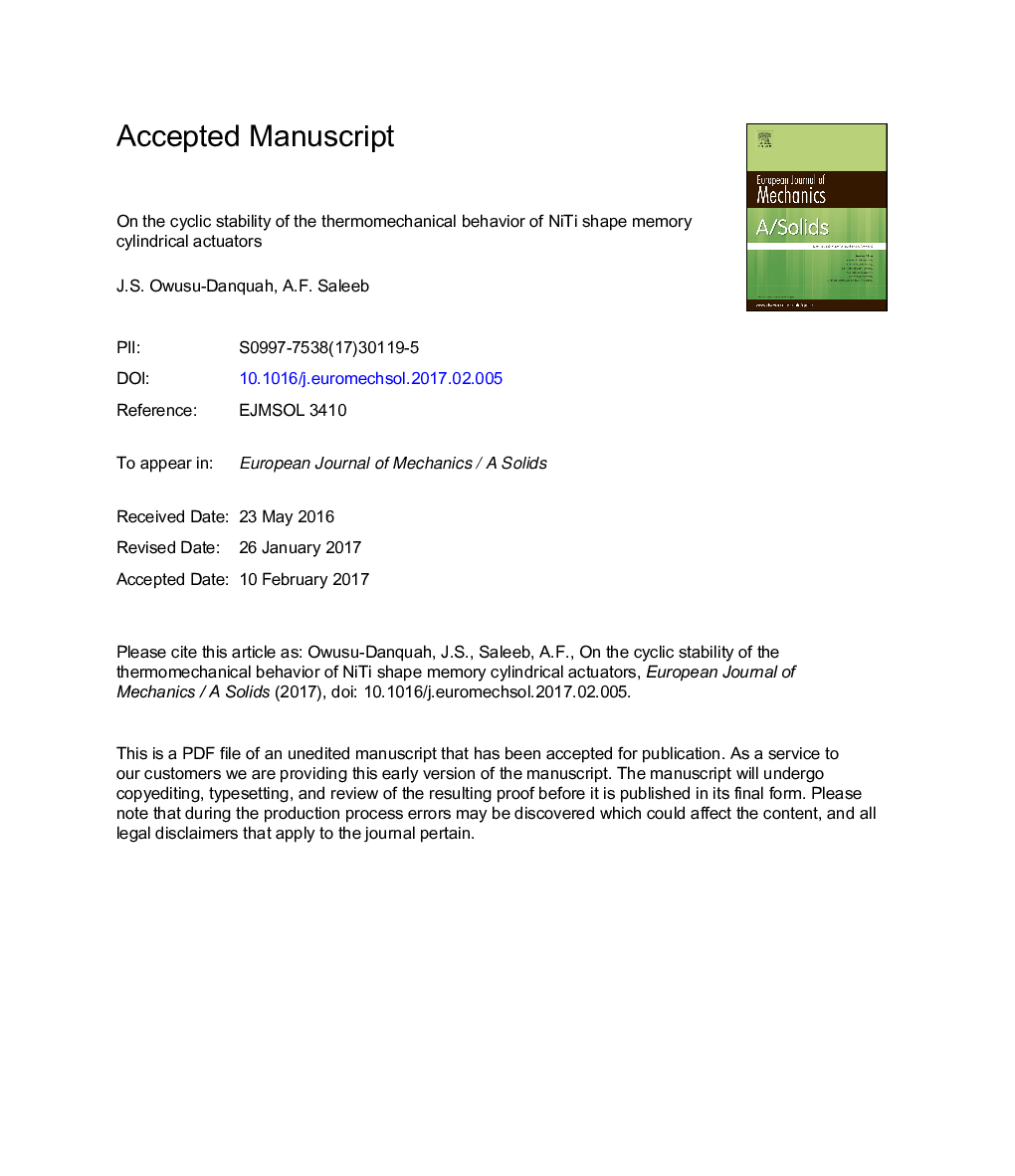| Article ID | Journal | Published Year | Pages | File Type |
|---|---|---|---|---|
| 5014307 | European Journal of Mechanics - A/Solids | 2017 | 48 Pages |
Abstract
The cyclic performance of cylindrical SMA actuators are investigated, taken into account the individual effects of the (1) selected SMA material, (2) geometric configuration of the actuator, and (3) prior mechanical load path taking to a targeted stressed preload state before starting thermal cycles. The “ordinary”, commercially-available, binary Ni49.9Ti50.1 and a developmental “high temperature” ternary Ni50.3Ti29.7Hf20 alloys are used for comparison. The responses of these alloys are characterized using a multimechanism SMA model. Cylindrical actuator geometries, ranging from thin tubular configuration, where there is more uniformity in stress distribution, to a solid section, having significant non-homogeneities in stress, are utilized. Both proportional and non-proportional loading conditions are examined under limited stress levels and thermal cycles. Based on the results obtained for the alternative actuator designs, the conclusions are: (i) high actuation strokes are produced by Ni49.9Ti50.1 actuators, (ii) the Ni50.3Ti29.7Hf20 actuators show relatively more dimensionally stable actuation performance, (iii) there is a marked difference in the degree of mechanical load-path dependency on cyclic behavior between the Ni49.9Ti50.1 and Ni50.3Ti29.7Hf20 actuators, (iv) the cyclic response of the Ni50.3Ti29.7Hf20 is far less sensitive to the actuator geometry in comparison to the Ni49.9Ti50.1, and (v) differences in actuator performance are connected to the intrinsic transformation behavior of the selected shape memory alloys.
Related Topics
Physical Sciences and Engineering
Engineering
Mechanical Engineering
Authors
J.S. Owusu-Danquah, A.F. Saleeb,
